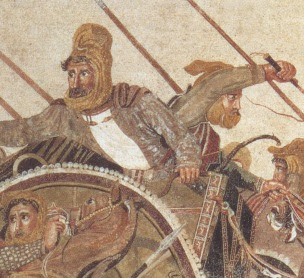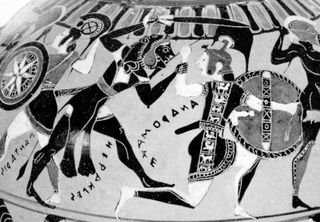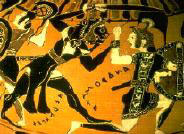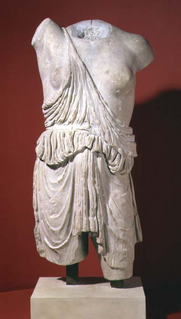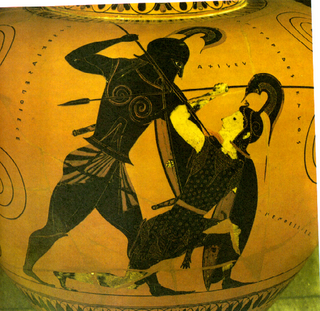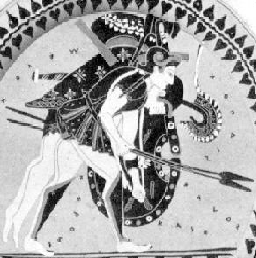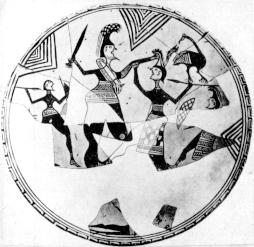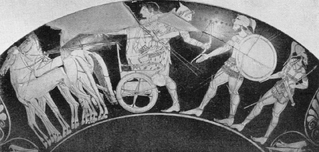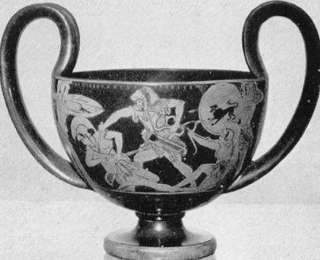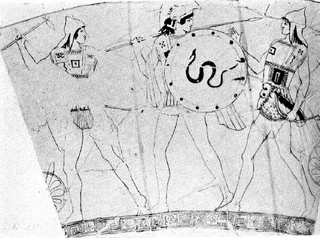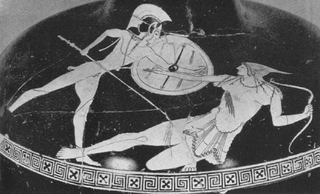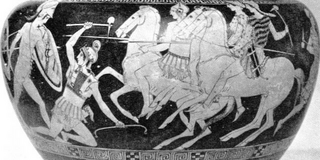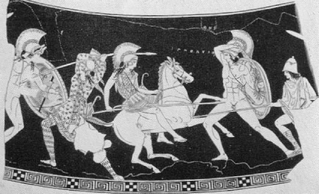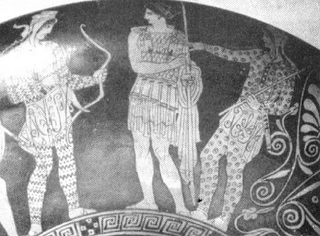Alexander the Great
According to livius.orgdaharder
I. Youth
A. A Macedonian youth
1. Son of Macedonian king Philip II and queen Olympias
2. Philip brought the Macedonian people to civilization
3. Philip overcame political divisions to bring Macedonia to its potential
4. Persia was declining in power, due to civil war
5. Greek was declining in power, Sparta lost Messenia
B. The Macedonian army
1. Philip seized the throne in 360/359
2. His coins have been found all over Asia.
3. Elements of Philip’s army
a. The Companions- noblemen, fighting on horse
b. The phalanx- infantry men with lances
c. The Shield bearers- heavy infantry, the royal guard
d. The engineers- siege warfare
4. Alexander grew up surrounded by war
C. Education
1. Read books from Homer, Herdotus, Xenophon
2. Learned much of Persia: met Artabazus, Persian exile
3. Taught by Aristotle of Stagira
D. Macedonian, Greece, and Persia
1. Philip expanded Macedonia: added Trace, Chalcidice and Thessaly; attempted to unite Greece
2. Philip declared war on Persian in 337 in attempts to unite Greece
3. Artaxerxes III died; Artaxerxes IV had no firm grasp on throne and was then killed by Bagoas; Darius III Codomannus became King of Persia
4. Philip was murdered by one of his guards
5. Alexander became king and inherited the war in Asia
II. Restoring order in Greece
A. The first weeks
1. Antipater arranged that the army greeted Alexander as king
2. Alexander gained the loyalty of general Parmenion
3. He called the Thessalians to order
B. The sack of Thebes
1. Attacked Thracian tribes and the Illyrians to prove Macedonia was still strong
2. The Greek cities rebelled against Macedonian power, with rumor that Alexander had died in the campaign
3. Alexander ended the rebellion at Thebes by sending a phalanx battalion to raze the town
4. Alexander met with the philosopher Diogenes of Sinope, who believed that people should behave as simple as possible
III. Beginning of the Persian campaign
A. To Asia
1. Memnon of Rhodes had pushed back Parmenion
2. Alexander visited Troy to honor the Homeric heroes
3. Memnon proposed the Persians avoid battle and burn crops, forcing Alexander to return; the other commanders decided it was better to fight
B. The Granicus
1. Alexander and Parmenion moved to meet the Persians at the Granicus River, where the Persians held a strong defensive position
2. Alexander most likely listened to Parmenion’s advice and waited to attack
3. The Macedonians moved to the other bank; Persians launched a cavalry charge; Alexander led his archers and Agrianians against Memnon, and quickly ended the battle
C. Summer
1. Motives of expedition to Asia
a. To liberate Greek cities in the Achaemenid empire
b. To punish the Persians for the expedition of Xerxes
2. Alexander established democracies in the Greek towns of Asia
3. He appointed satraps and started to levy taxes from the towns
4. Parmenion captured Dascylium; Sardes surrendered to Alexander
5. The capture of Sardes enabled Alexander to pay his men
6. The Macedonians faced a difficult fight at Miletus; Persians had a strong harbor here
7. Admiral Nicanor occupied the island Lade and kept the Persian navy from entering the harbor; Alexander’s siege engines broke the the wall and took the city
IV. From Caria to Pamphylia
A. Halicarnassus
1. King Darius appointed Memnon as supreme commander in the west
a. Memnon remained in Halicarnassus and prepared for a long siege
b. King Darius used this time to build up a large army
2. The Persians had numerous advantages at Halicarnassus
a. Memnon had 300+ ships and could evacuate at any time
b. Walls were new and strong
3. Alexander took Halicarnassus, but lost many men
4. Alexander becames allies with Carian ruler Ada
B. Lycia and Pamphylia
1. Alexander decided to take the towns of Phoenicia, to ensure control of the sea
2. The Macedonian army took the ports of Lycia and Pamphylia with little resistance
3. One day the waters receded to let the army pass; this was the first step towards the belief that Alexander was a god
V. The Anatolian highland
A. Spring in Phrygia
1. The army strategically moved away from the coast into the highlands
2. Alexander and Parmenion split and conquered central Turkey; then met at Gordium in April 333
3. They stayed in Gordium to take share of the harvest and receive reinforcements
4. Memnon convinced Spartan king Agis III to attack the Macedonians; Memnon launched a successful naval offensive; Alexander ordered Antipater to assemble a navy
5. Both Darius and Alexander had grown too confident for negotiations
6. Alexander attempted to loosen the legendary Gordian knot, but eventually lost his temper and cut it with his sword
7. Memnon fell ill; Alexander ordered his men to continue their march
B. The Cilician gate
1. Alexander appointed Antigonus as satrap of Phrygia
2. The army marched the Royal Road, then turned south to Cilicia
3. Macedonians had to pass thru the Cilician gate and the scorched earth that Memnon left
4. During the night, Alexander led an attack and forced his way through
5. The Macedonians reached Tarsus just in time to save the city from the Persians
VI. Issus
A. Maneuvers
1. Macedonians heard rumors that Darius was assembling a huge army and advancing towards them as swift as possible
2. Alexander had fallen ill
3. After recovery, he launched a campaign against the mountain tribes of Cilicia
4. Parmenion and a small army occupied the “Assyrian Gate”
5. The Macedonians were planning to attack Darius in Sochi, but found out he had come around to their rear and captured Issus
6. Alexander’s only option was to face the Persian army
B. Battle
1. The outnumbered Macedonians descended to the Pinarus River; Darius had posted a force on the mountain to the Macedonian right
2. Alexander broke thru the enemy lines and attacked the Persian center
3. Darius was forced to retire from the battlefield
4. Losses were heavy on both sides
C. Aftermath
1. Parmenion went to Damascus and seized Darius’ treasure
2. Alexander used this treasure to mint new coins, with the head of Heracles on one side and Zeus on the other
3. Alexander treated Darius’ mother, wife, and children kindly
4. Alexander’s childhood friendship with Barsine, widow of Memnon, turned into a serious love affair
5. He was 23, and had to find a woman to marry
6. Alexander found a new city, Alexandria
7. Darius offered a ransom for his mother, wife and children; he eventually gave all of his land west of the Euphrates to Alexander
8. Alexander’s first letter to Darius was intentionally rude
9. Alexander began to refer to himself as “king of Asia”
10. Aradus surrendered to him immediately
